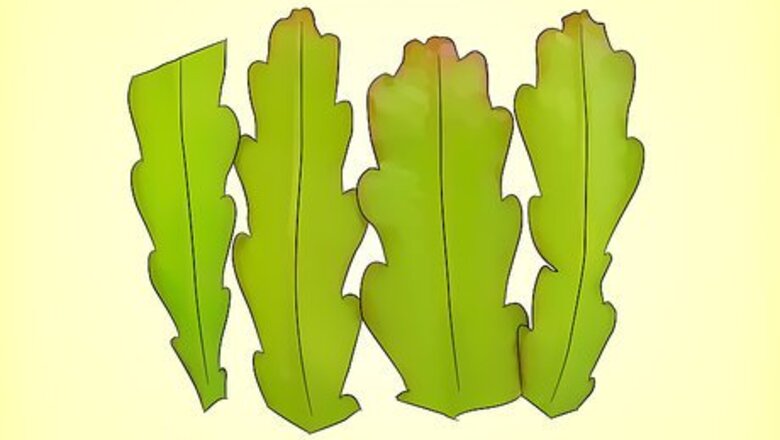
views
Planting your Cactus

Obtain epiphyllum cactus cuttings. You can buy epiphyllum cactus cuttings from a garden center or an online plant store. Cactus cuttings are sections of a mature stem which are planted and used to grow a whole new plant. If you already own an epiphyllum cactus that is strong and healthy, you can make your cuttings. Choose a healthy leaf of approximately 4 inches (10 cm) and cut it off at the stem below the base of the leaf. Repeat this process until you have obtained the desired number of cuttings.
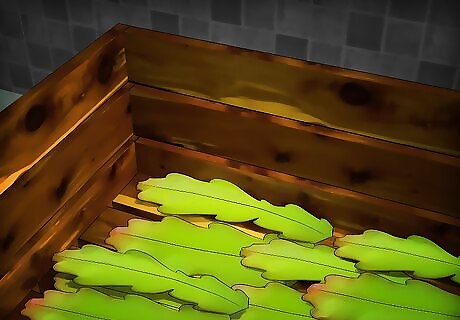
Store cuttings in a cool, dry place away from the sun for 10-14 days. Good places include a garden shed, bathroom, or basement. Because the epiphyllum cactus is a succulent plant, cuttings can remain good for up to a month. Storing the cuttings will allow them to cure. The purpose of curing the cuttings is to allow calluses to form over the ends of the cutting. The calluses protect the cuttings from rot. If you purchased the cuttings and don't know exactly when they were made, cure them for a week before planting.
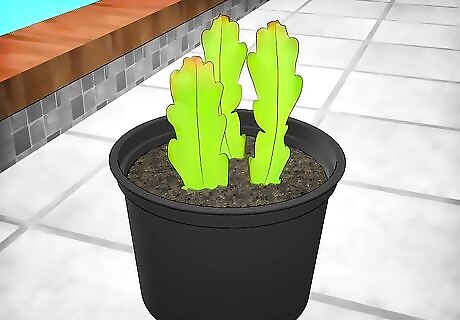
Plant three cuttings in a 4-inch pot with a drainage hole in the center of the base. This will allow adequate room for the cactus to grow while the drainage hole will prevent over-watering. Plastic pots are preferable to terracotta pots, as they will allow the soil to retain moisture for a longer period. Choose potting mix for epiphyllum cacti. This consists of three parts potting soil mixed with one part of coarse non-organic material such as perlite, which is also referred to as sponge rock. The non-organic material should be 1/8 to 1/2 inch (1/3 to 1 1/4 cm) in diameter. You can also add 1 to 1 1/2 tbsp. of orchid bark per pot. Alternatively, you can plant the cuttings in pure perlite. However, once the cuttings have developed roots, you will have to move them to the epiphyllum potting mix. The potting mix should always be damp, never wet. This will ensure healthy and faster growth.
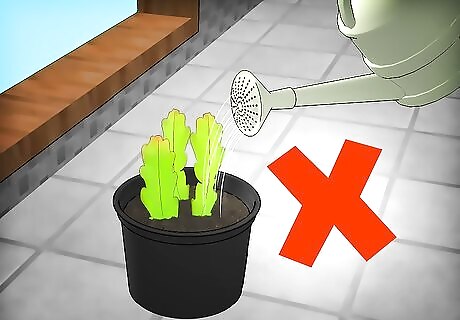
Refrain from watering the cuttings until they are well-rooted. If you water them too soon, the cuttings will rot. To check for rot, tug gently on each cutting. If you feel any resistance, this is good because it means the cutting is rooting. You can water the cutting. If a cutting has rotted, take it out of the pot, cut away the rot, cure the cutting, and pot it again.
Caring for your Cactus

Decide where you want to grow your cactus. Unless you live in a warm climate where temperatures seldom dip below 50° F (10° C), your epiphyllum cactus will do best indoors or in a heated greenhouse. If you plant your cactus outside, it will need to be out of direct sunlight. A spot under a tree or a wood lattice that lets in filtered light is ideal. If you keep your cactus indoors or in a greenhouse, make sure to provide moderate to high humidity for your cactus. You can do this by placing the pot on top of a tray filled with gravel and a little bit of water.
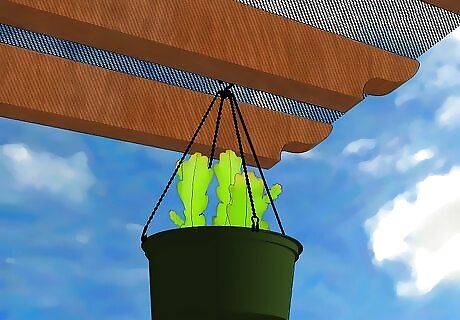
Place the epiphyllum cacti in hanging containers in filtered sunlight. Epiphyllum cacti love growing in hanging containers, and doing so will provide a good base for the pendulous growth of the plant. As a bonus, hanging containers make it harder for snails — the number 1 epiphyllum pests — to get to the plants. A shady spot under a tree or beneath a shade structure made of cloth or lath provides the right amount of light. If grown in direct sunlight, cacti can get burnt. If set in too shady an area, the cactus can become overly lush and will be shy to produce flowers. Also, the long stems won't be strong enough to hold themselves up and will fall over, sustaining damage. If possible, choose walls or eaves that face east or north for the best lighting. Ensure good air circulation but protect the plants from storms and strong winds. Windstorms may cause hanging baskets to swing against each other and long stems to whip around, causing breakage.

Water your cactus every few days or every day in hot weather. The soil should never be completely dry, but should also never remain wet after watering. Check the soil regularly to gauge whether you need to add water. When you water, make sure to add enough water so that any excess water flows out of the drainage holes. This will rinse out the soil and prevent the accumulation of soluble salts in the soil.
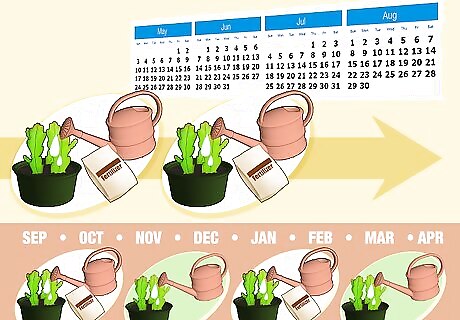
Lightly fertilize your cactus with a time-release fertilizer. Epiphyllum cacti bloom best when you give them regular, light fertilizer applications. Feed your epiphyllum cactus at each watering time from May to late August. After this period, only fertilize every other watering time. Only use about one-third to one-half the amount of fertilizer that is recommended on the label. Since cacti naturally grow in relatively low nutrient environments, they won't require as many nutrients for healthy growth. During the winter, fertilize with a low or no nitrogen fertilizer. Use a 2-10-10 or a 0-10-10 formulation. After the blossoming season is past, fertilize with a balanced formulation like 10-10-10 or 5-5-5.

Move your cactus to warmer spots during cold spells. Frost and prolonged temperatures below 40 degrees Fahrenheit (4.5 degrees Celsius) are harmful to epiphyllum cacti. Cover your cactus with a blanket or cardboard box for better protection. Epiphyllum cacti are also vulnerable against hail, which may not be big enough to break the stems but can cause unsightly scars where each hailstone has struck. The most optimal time to plant cacti is during the period from April to September. This will ensure a warm, sunny atmosphere while also avoiding direct sunlight that may hinder growth.

Repot the plants after 1 to 2 years. Changing the potting mix will resupply the nutrients that will have naturally been absorbed by your cactus Each plant's size will determine when you need to repot it. A plant that is growing well and is beginning to get too big for the pot will need to be moved to a bigger pot, while a plant that remains small can stay in the same pot for longer. Use 7 to 8 inch (17.5 to 20 cm) plastic pots with the same drainage holes and potting mix. Wrap newspaper around the stem of each plant to prevent damage. Holding the plant around the base of the stem, turn it upside down, and carefully tap the pot against a hard surface such as the underside of a table to loosen the soil from the inside of the pot. Gently pull the pot away from the plant and remove the old soil. Examine the roots. If any show signs of rot or any other damage cut them away as close to the plant as possible. Don't be discouraged if you haven't noticed any flowers; an epiphyllum cactus will not bloom until it has grown to the size of its pot, which usually occurs 3 to 4 years after planting the cutting.
Pruning and Fighting Pests
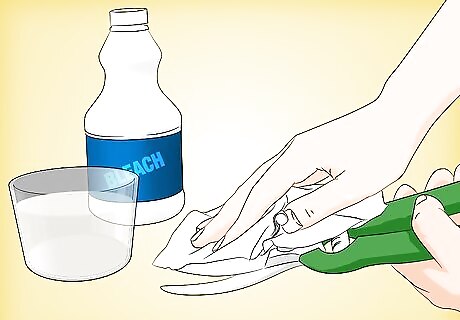
Disinfect your pruning shears with a bleach-water solution. This will prevent your cactus from sustaining diseases or other infections that can affect growth. Use a 10% diluted bleach solution, mixing 1 part chlorine bleach with 1 part water.
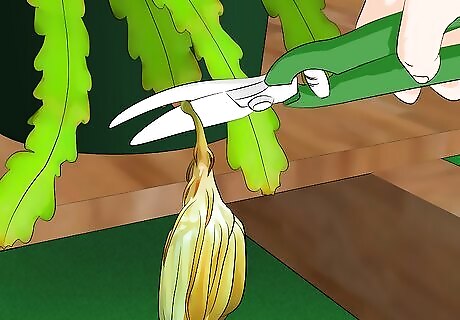
Clip off flowers after the blossoms expire. Make your cut just below the flower head. Pruning dead parts of the plant not only improves its appearance, but it will also encourage new growth and healthy blossoming.
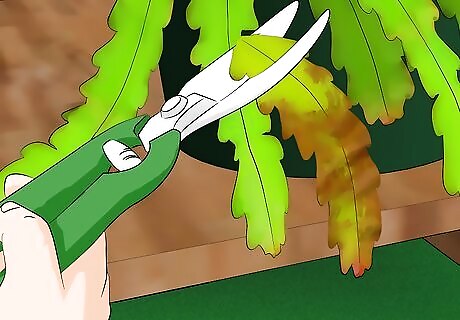
Cut all dead, diseased, and broken stems back to the point of origin on the main stem. When you locate a stem to remove, follow it back to the base of the stem and make a straight cut just outside the joint of the parent stem. Immediately disinfect shears after trimming dead or diseased stems. This will keep the disease from spreading throughout the plant. It is best to assume that any dead stem died as a result of a disease. Disinfecting after each pruning session may require more bleach, but it will keep your cactus healthy and beautiful.
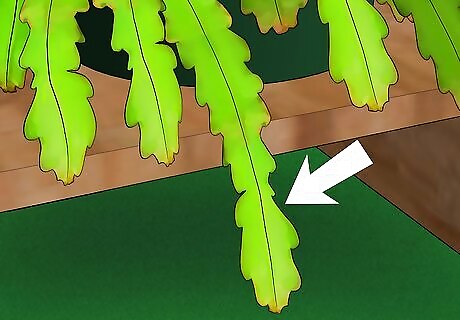
Remove any long stems that disrupt the balance of the epiphyllum. Trace them back to the parent stem and cut at the base. These stems are usually located along the outer edges. Remove stems as needed until all sides of the plant are fairly uniform.
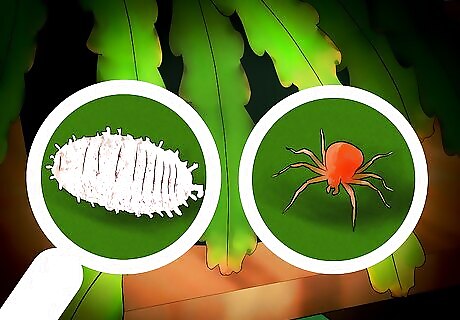
Inspect your cactus for mealybugs, scale insects, and spider mites. Snails are fairly simple to spot and remove (use store-bought snail bait), but the aforementioned bugs require specific measures for preventing infestation. Mealybugs have a waxy, white, cottony appearance. They are slow-moving and usually are in clusters along leaf veins or spines, on the underside of leaves, and in hidden areas at the joints. Scale insects resemble small, cottony dome-shaped shells. They attach themselves to stems and leaves but can be pried off. Spider-mites are hard to see with the naked eye, but signs of infestation include webbing and small brown dots, especially on younger growth. If you tap the affected area of the plant over a piece of white paper, spider-mites will resemble dust. These insects tend to suck the plant's juices resulting in weak, wrinkled, or shriveled leaves. Severe infestations can result in the death of the plant. The first symptoms can include stickiness or black mold on or near the plant.
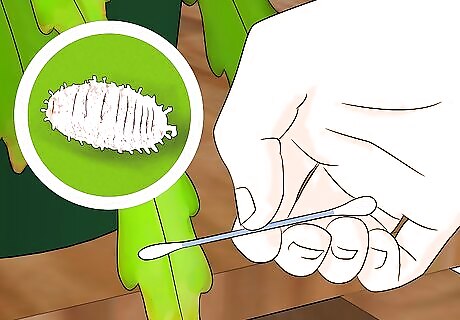
Remove mealybugs and scale insects with cotton swabs dipped in alcohol. You can also spray with a diluted alcohol solution of 1 parts alcohol and 3 parts water. Spraying is best for fighting spider-mite infestation and other hard-to-spot bugs. Be cautious, however, as this may damage the epidermis of the cactus. Test a small area before spraying the entire plant.
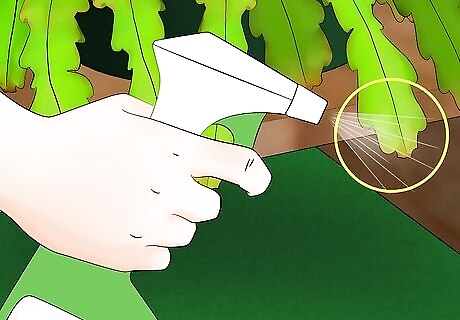
Use insecticidal soap to coat the plant. Insecticidal soap can be purchased at your local garden or home improvement store. This treatment may also damage your cactus. Since cacti have oils and waxes that make them susceptible to damage, it is best to use it sparingly and to test a small area before washing the entire cactus.
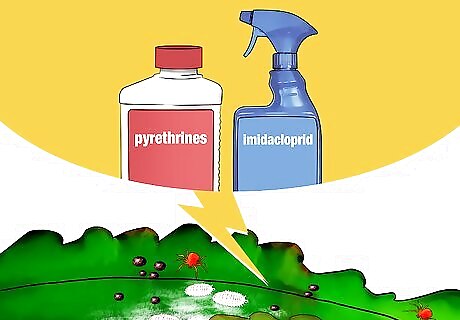
Spray with insecticides to kill bugs and stop serious infestation. Use insecticides like Neem or pyrethrins for visible bugs. Systemic insecticides such as imidacloprid or Acephate are best for controlling pests that aren't as easily accessible. Consult the label to see how much you should use on your cactus and whether or not prolonged use is safe.
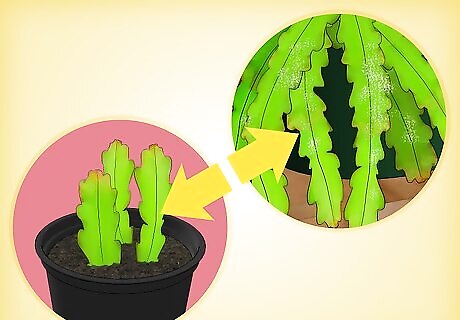
Quarantine new plants from infested plants. Remember that infestation isn't just harmful, it is contagious and will spread from plant to plant until it is stopped. Check new plants carefully for the previously mentioned symptoms and bugs. If you are sure it is pest free, keep it in an area far away from the infected plants. If you do find pests on your new plants, it may be best to simply discard it rather than treat it to save you time, money, and effort.




















Comments
0 comment